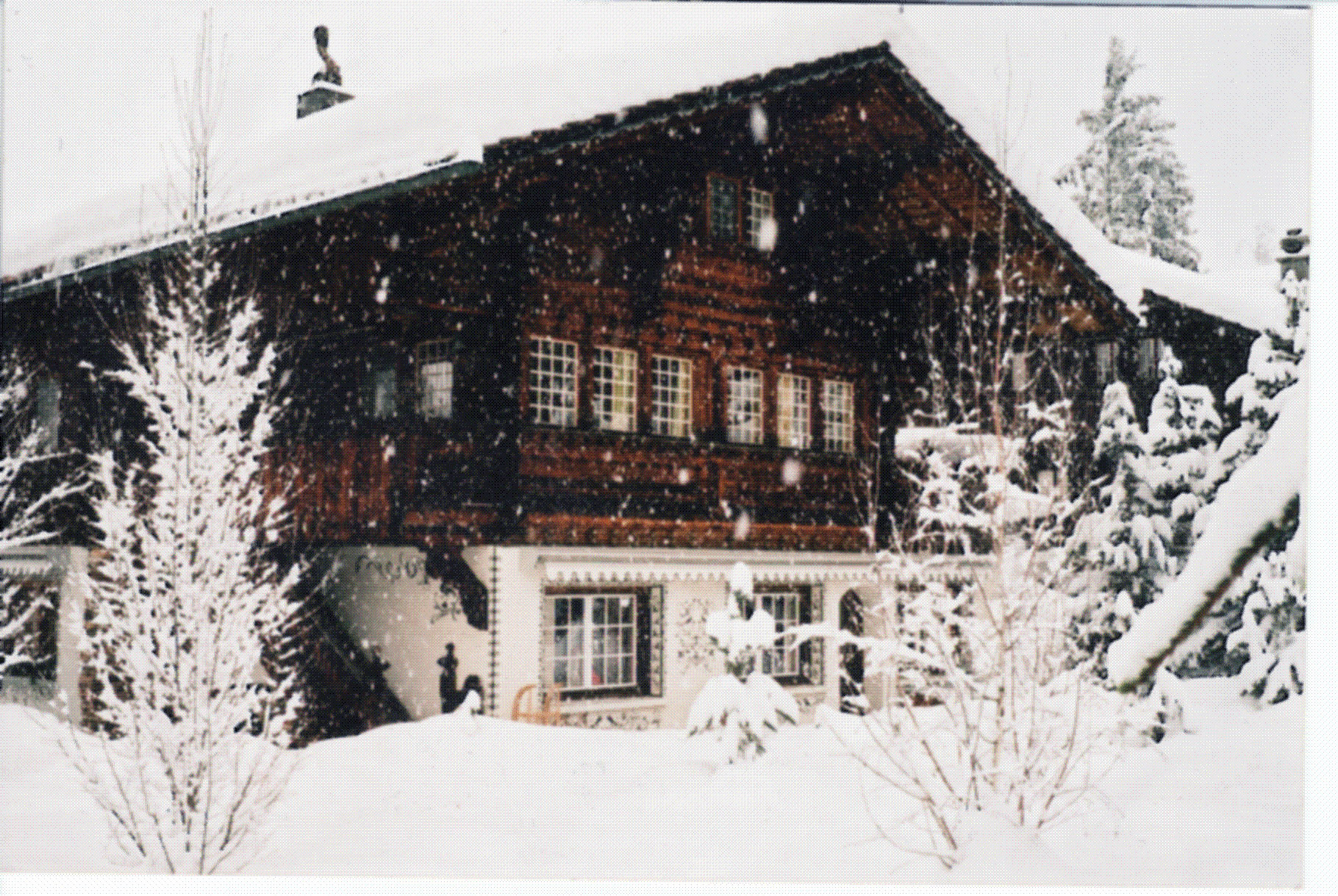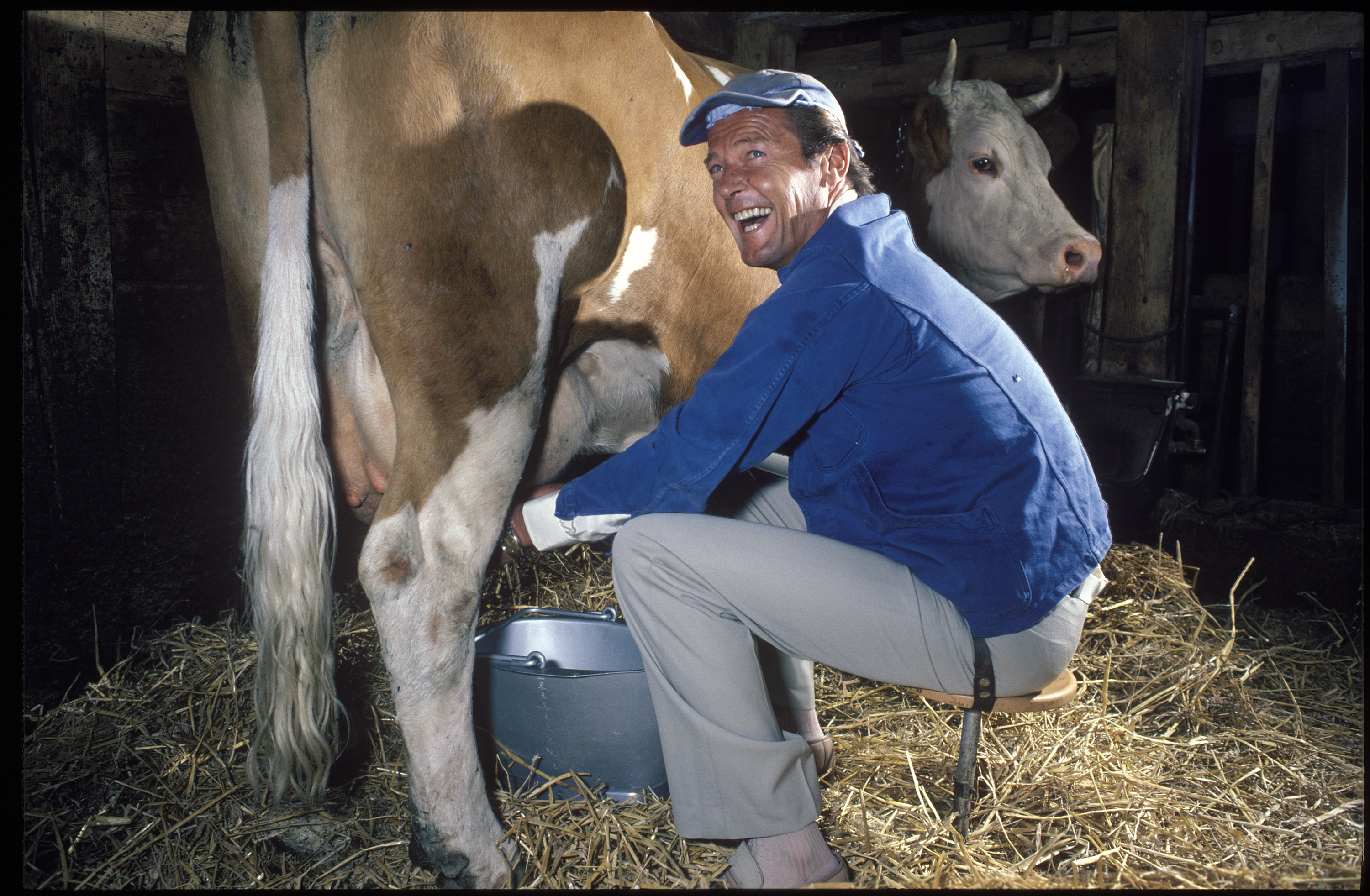
Richard Scarry: the best children’s illustrator … ever

Boston-born Richard Scarry, creator of the phenomenally successful Busytown and its animal inhabitants, loved Switzerland’s lakes and mountains so much he bought a chalet in Gstaad and spent his last 25 years living and working there.
Indeed, Switzerland influenced his illustrations, as his son Huck Scarry tells swissinfo.ch, with Swiss clothing, architecture and landmarks appearing in several books.
Generations of children – and parents – around the world have grown up with lederhosen-wearing Huckle Cat, alpine-hatted Lowly Worm and other anthropomorphic characters whose endlessly revisitable adventures have helped sell hundreds of millions of books.
Born in 1919, Scarry (rhymes with “Harry”) now ranks alongside Dr Seuss and Beatrix Potter in the sales charts. But his career didn’t take off until 1963, with the publication of his Best Word Book Ever, in which his trademark style of “fun education”, using big, minutely detailed and incredibly “busy” pages, is apparent.
“It’s a precious thing to be communicating to children, helping them discover the gift of language and thought,” he once wrote. “I’m happy to be doing it.”
Scarry died in Gstaad, canton Bern, in 1994, having written and illustrated more than 300 books, including What Do People Do All Day? (1968), Cars and Trucks and Things That Go (1974) – can you find Goldbug hidden on every page? – and Best Christmas Book Ever (1981).
‘Wonderful trip’
The Scarry European adventure began after the Second World War, during which the young illustrator had worked on Allied magazines in North Africa.
“My father always loved being in Europe,” his son Richard, nicknamed Huck after Huckleberry Finn, told swissinfo.ch.
“He came over newly married in 1950 and they spent several months travelling around Europe – most of the time in Austria and Paris. He always loved the Alps, history, languages, good wine, good food. My father was a very cultured person and I think he always felt very much at home in Europe.”
Huck, an illustrator in his own right who splits his time between Gstaad and Vienna, remembers his first trip when he was ten years old in 1963.
“We bought what were called Eurail passes, which would give you unlimited rail travel in Europe for three months. Literally almost every day we were on a train, and we travelled all over the place, from London through France, Italy, Germany, Scandinavia – it was a wonderful, wonderful trip,” he said.
“We came back a couple of times to go skiing – in Kitzbühel, Zermatt, St Anton – and one day my father said, ‘you know, it would be great if we could spend a little more time in Europe, maybe a year or two’ – and that’s what they did!”
They packed their bags, rented their house in Connecticut and moved to Lausanne in 1968.
“My father wanted to be near the mountains because he liked to ski and go hiking. Also there was a school I could go to. I think they chose French-speaking Switzerland because the thought of learning German from scratch was just too daunting! I think they felt more comfortable trying to learn French…”

More
‘My father was absolutely a genius’
Social life in Gstaad
At first, the Scarrys lived in Ouchy, the lakeside quarter of Lausanne.
“We used to go up to the mountains at the weekends,” continued Huck, who seems to have enjoyed an idyllic childhood.
“My father had bought a wonderful big black Mercedes when he moved over and he loved driving it. We drove up virtually every valley in the Valais and many in the Aosta Valley [in neighbouring Italy] and in the Bernese Oberland,” he said.
“One day, he thought maybe it would be fun to actually have a place of our own in the mountains. So we looked around and were very lucky to find this chalet up in Gstaad, in the village, which he could afford. We used to spend weekends up there and eventually the weekends became longer and longer until finally my parents didn’t go back down.”

Gstaad has a reputation as being somewhere where celebrities can walk down the street without being hassled. In its Seventies heyday, it attracted the likes of Bridget Bardot, Elizabeth Taylor and Richard Burton (see gallery). But Huck said this lifestyle was totally foreign to his father.

More
The rich and famous who brought fame to Gstaad
“He didn’t go to Gstaad for the parties or because it was jet set – that didn’t interest him at all. He didn’t really have any celebrity friends. I know he did meet Roger Moore, Julie Andrews and Blake Edwards but they weren’t people who would drop by the house! Their friends up there were basically local people. That’s how we live there too – our friends are the baker and the carpenter and so on,” he said.
“There’s a double social life in Gstaad: there’s the international set and, thank goodness, there are also still the locals.”
Cosy atmosphere
Scarry turned the downstairs of the chalet into his studio, which is still used by his son today.
“One doesn’t need a great deal of space or equipment to do these books: just a table, pencils, paper, paints and lots of ideas!” Huck said.
“It’s a cosy atmosphere, filled with books and lots of things my father collected throughout his life. He loved to travel and pick up things in Africa, the Far East and so on – there’s a lot of Swiss memorabilia as well. It’s a cosy place choc-a-block with funny, interesting things to look at.”
Huck’s daughter, socialite and artist Olympia Scarry, recalled in an interview what it was like growing up in Switzerland and her childhood memories of Gstaad.
“We never owned a television. Well, there’s an exception: at Christmas-time at my grandparent’s chalet we watched Some Like It Hot, The Sound of Music, Luchino Visconti’s Death in Venice and just about every Hitchcock film ever made on their black and white Sixties television. We watched them over and over.”
Swiss influence
Scarry’s later illustrations reflect a Swiss influence, such as clothing or architecture. “In many of his books there are actual buildings from Bern and Murten,” Huck said.
“I still have his collection of postcards of Swiss buildings – churches, houses, town halls and things like that. If you look in a number of his books, you’ll find chalets and Bernese churches and other buildings.”
He points out that towards the end of Funniest Storybook Ever (1972), “where the father cat is chasing a runaway car, there’s actually the intersection at Ouchy and the newspaper stand where my father would buy his Herald Tribune in the morning”.
Here is that scene, next to the cover of the 1991 edition of the Best Word Book Ever (changes include a father added into the kitchen and the “fireman” becoming a “fire fighter”). Click hereExternal link to discover more fascinating differences between the 1963 and 1991 editions.

Proud American
Despite his love of Switzerland, Richard Scarry never took Swiss citizenship.
“He never intended to, never wanted to,” his son explained. “He was an American – Bostonian – and I think he was proud of that. I changed my citizenship simply because I’d lived in Switzerland for many, many years and for me it was a natural thing to do. I felt like being part of the country I was living in and so I did that in the 1980s.”
Huck believed there were many aspects of Switzerland his father appreciated. “I know he loved, like everybody, the natural beauty. There are very few places in Switzerland which aren’t interesting and beautiful – much like Italy, I would add. Just travel around and there are always fun and beautiful things to look at,” he said.
“I think he also found the people very interesting and engaging. I know he enjoyed, in Gstaad particularly, that people were speaking all sorts of languages and lots of people spoke English with him. He found it a very conducive place to work and he just enjoyed being there. He simply felt at home.”
Richard Scarry was born in Boston on June 5, 1919. His parents owned a store called Scarry’s Department Store and were financially comfortable, even during the Great Depression.
After graduating from high school, he went to business college but soon left, enrolling at Boston’s Museum of Fine Arts School. However, he had to leave to join the army for the Second World War. He was posted to North Africa to work as the editor, director, illustrator as well as writer in the section responsible for boosting Allied soldiers’ morale.
Following the war, Scarry did various freelance art jobs for several magazines. He also did illustrations for authors of children’s books such as Patricia Murphy (whom he married in 1948).
Scarry’s career as an author and illustrator of children’s books picked up in the Fifties when Little Golden Books began to publish his work. However, it was in 1963 that his career really took off with the publication of Richard Scarry’s Best Word Book Ever.
In the Eighties and Nineties, many of his “Best Ever” books were converted into popular animations, still available on DVD.
Richard Scarry died of a heart attack in Gstaad on April 30, 1994. He was posthumously awarded a Lifetime Achievement Award from The Society of Illustrators in 2012.
2019 will be the centenary of his birth. His son, Huck, is keen to organise a travelling exhibition of original work and memorabilia.

In compliance with the JTI standards
More: SWI swissinfo.ch certified by the Journalism Trust Initiative




























You can find an overview of ongoing debates with our journalists here . Please join us!
If you want to start a conversation about a topic raised in this article or want to report factual errors, email us at english@swissinfo.ch.